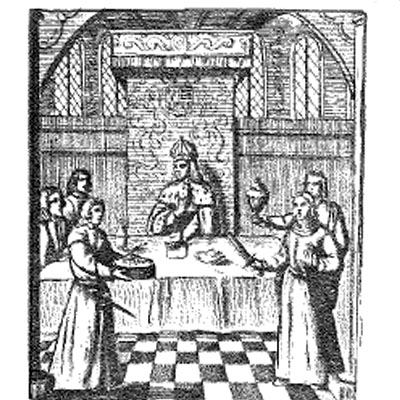Tales from the Archives: Coventry: A Royal Safe-Haven
01 September 2019
During 1459, Coventry became a vital location and safe-haven for the reigning King Henry VI and his wife Queen Margaret of Anjou.
This period falls within the context of the War of the Roses (1455-1485) which was a dynastic civil war occurring between the Lancastrians and the Yorkist’s, both of which were decedents of Edward III. The Lancastrian Henry VI and Richard, Duke of York, vied for the throne.
Throughout Henry VIs reign he suffered from unfortunate bouts of mental illness meaning that the Duke of York stepped in as Protectorate in 1453-1454 and also in 1456. As a result, the question of who was the rightful ruler was constantly resurfacing.
In 1445 Henry married Margaret of Anjou and it is believed that the Queen was actually the political authority. It was often Margaret who contested the Duke of York’s challenges to the throne and aimed to protect her son’s inheritance.
The connection between Coventry and the crown was initially a financial one as the city offered money to fund the Scottish and French wars. However, it is also documented that Henry often visited the city for personal trips – even spending the Christmas of 1434 in Kenilworth. He also introduced a new charter in 1451 naming the city of Coventry as a county which was a special honour.

(‘Troubled Times’ booklet by E. Castle and C. Kennedy. Image of King Henry VI reproduced from a fifteenth-century manuscript)
Queen Margaret was also especially fond of Coventry and it actually became known as her ‘secret harbour’.
But why Coventry? Historian David McGrory actually described it as ‘the best defended city in the heart of England’ in this period. It was also definitively Lancastrian in its alliance and was seen as the most secure place for the royals.
This was certainly the case from 1450 when a rebellion in Kent led to 15,000 armed men marching on London and the Royal Household. This forced the royal family to flee and their chosen safe-haven was Coventry. Also, in 1454 Margaret, upon hearing of the Duke of York’s plot to kill the King, urged her husband to return to Coventry rather than remain in London.
By 1456, the first battle of the War of the Roses had occurred and Coventry had sent 100 armed men into battle to support the Lancastrians. It was during this period that Margaret actually decided to move the whole of the royal court to Coventry, including artists, musicians and scholars.
During 1459 the king and queen were in Coventry every month except April. The Queen initially moved with her son and had an army camped outside the city for added protection, before Henry also accompanied them.
Several important parliamentary councils were held at the Chapter House of the Priory in Coventry in 1459. On these occasions, Yorkist’s were discussed because of their continuing efforts to raise armed forces in the north and south of the country. The parliament session ended in Coventry on 20th December in 1459 after passing the first Bill of Attainder which limited the rights of 23 Yorkist nobles.
From this it can be seen that Coventry acted as a safe-haven for the royals. However, it was by no means a secluded hideaway – rather it was a protected and supportive city which allowed the King and Queen to conduct parliament without fear. It is no wonder that the royal couple held a lasting affection for the city.
Sources:
Books: Thomas Sharp, History of Coventry, Coventry, 1844; David McGrory, A History of Coventry, Chichester, 2003 (Both books are available in the Herbert Museum and Art Gallery, History Centre, Reading Room).
Archive items: ‘Troubled Times’ booklet by E. Castle and C. Kennedy, 1992 (CCE/8/1/1/8); Leet Book Extract regarding Henry Vis Reception in Coventry in 1451, c.1840 (PA21/2/8).